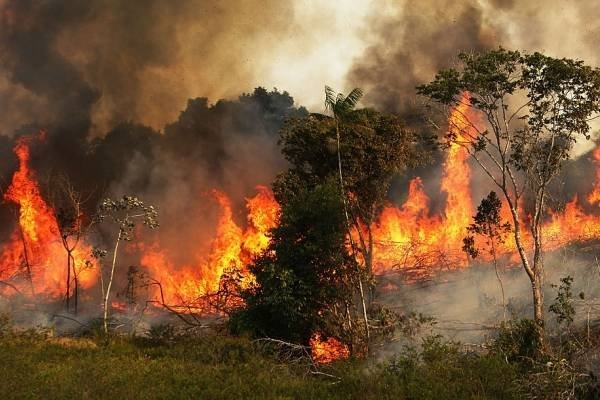Lungs of earth themselves on ventilator! Huge and long-lasting fire destroys Amazon forest
Total Views |
New Delhi, August 22: Forest fires is not in fact a new phenomenon. However, recent researches show that the intensity and frequency of forest fires in the parts of Canada and Amazon rain-forest have substantially increased in the recent years. Amazon forest, which produces 20% of the earth's oxygen, is continuously burning since last three weeks.

Amazon rainforest fires are filling the Brazilian sky with smoke, and NASA says the number of fires in the region this year may have set a new record. According to Brazil's space research centre INPE almost 73,000 fires have been recorded so far this year. INPE is seeing an 83 percent increase over the same period in 2018. INPE, which has spotted 9,507 new wildfires in the country since August 15. The fires have been recorded in the Amazon basin, which house the world’s largest rainforests.
"Although it is not unusual to see fires in Brazil at this time of year due to high temperatures and low humidity it seems this year the number of fires may be record setting," Says NASA.
Canada’s Northwest Territories were scorched by record-breaking wildfires in 2014. As Earth’s northern regions grow warmer and drier due to climate change, fire seasons are getting longer and fires are becoming more severe.
Boreal forests are located in the northernmost regions of North America, Europe and Canada, and contain spruce, fir, pine, larch, aspen and birch trees. These forests store 30%-40% of all land-based carbon in the world, and most of that carbon is found in the soils. Soil-based carbon includes soil microbes; plant material made up of dead leaves, branches and stems; and both living and dead roots, as well as burned material from previous fires. During intense fires, the organic material that contains the soil carbon can burn along with trees and plants. Older carbon deeper in the soil does not always burn in a fire, but can stay protected in the soil. The researchers called this “legacy carbon.”
Boreal forests have long been thought to absorb more carbon from the atmosphere than they release into it, making them carbon “sinks.” But if bigger and more frequent fires start burning legacy carbon, these forests could start releasing more carbon than they store. Carbon dioxide is a greenhouse gas, so releasing more of it into the atmosphere could affect the balance of the global carbon cycle and contribute to climate change.
If wildfires do become more frequent, they could increase the number of young forests vulnerable to burning and legacy carbon loss, said the NASA report.